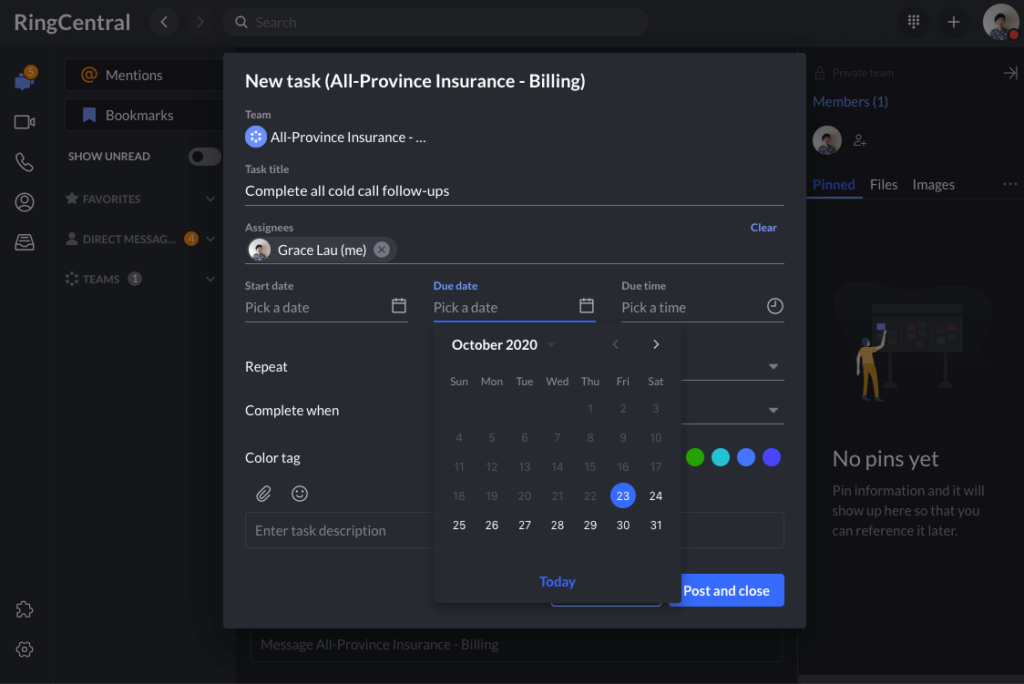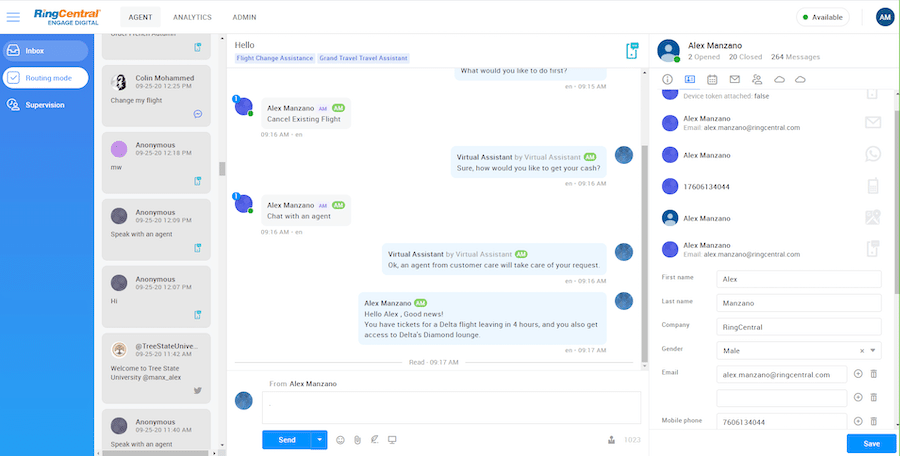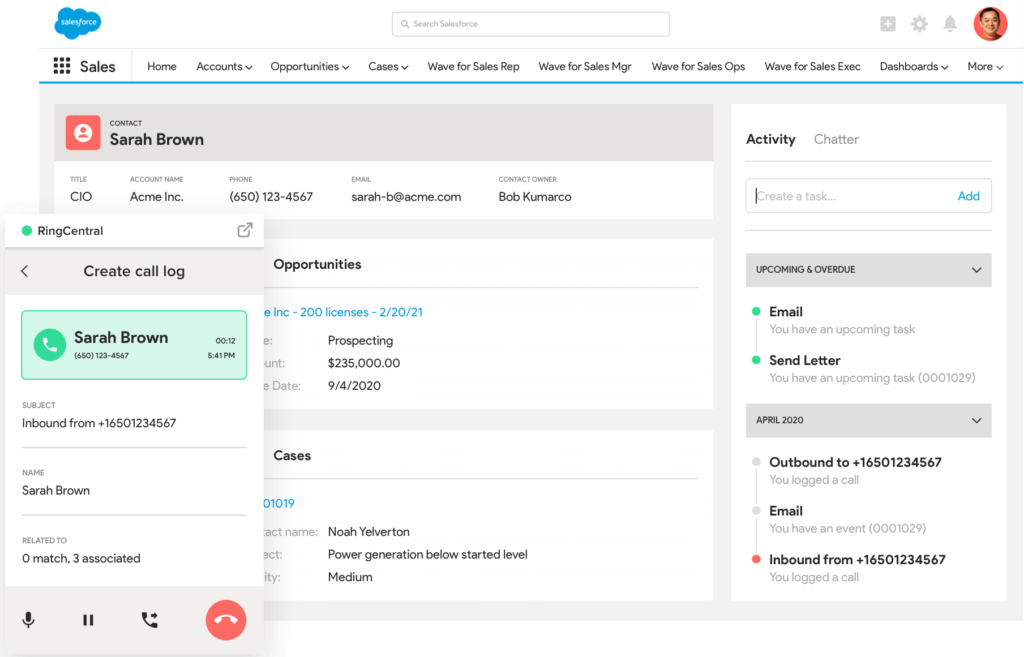Take any small business owner, anywhere in the world, and ask them if they have an easy job. No matter their business—firm, store, product—you won’t get a lot of “yes” responses.
Where does one even start? Sprawling companies and massive conglomerates abound, and competing with them can be immensely difficult.
That’s why we’ve put together this list. As a company that’s helped countless small business owners, we know that it’s tough. And we also know that it’s achievable. This article has 10 solid, actionable tips for you, applicable to all different aspects of running a business. We hope it helps.
Here’s what we’ll discuss:
- Collect customer feedback
- Make it easy for your customers to contact you
- Manage your projects
- Keep it personal
- Don’t be afraid of the big guys
- Respect your employees
- Create a set of guiding principles
- Implement a loyalty program
- Stay flexible
- Measure, measure, measure!
- Look at the big picture
How customer-obsessed is your business? Take the quiz to find out.
1. Collect customer feedback
No business would exist without its customers, so keeping them happy is pretty important. And the best way to keep them happy is to listen to them.
Sometimes large organizations pay consultants mind-boggling sums of money to find out what’s going wrong with their business, when they could have just asked their customers. (Please note: this isn’t a dig at consultants. Lots of consultants are great. It’s just that this does happen a lot.) This may be because companies don’t know how to collect customer feedback or implement it effectively.
Whether you’re asking your customers in person, sending emails, or setting up listening channels on social media, knowledge of what makes your customers happy can make or break your business. Don’t let it get you down when you receive negative feedback; that’s bound to happen, since nobody—and no business—is perfect. Treat it as a learning experience, and use it to make your product or service better.
This point is a big one. Collecting feedback and implementing it may seem like a daunting task, but it’s an essential one. Not sure how to approach it? We’ve got a handy guide on how to build your customer feedback process right here.
2. Make it easy for your customers to contact you
You know what’s worse than getting negative customer feedback? Not getting any customer feedback at all.
Some companies (we won’t name any names) make their customers jump through hoops just to get some kind of response. Don’t treat your customers like this. At least have a phone number or an email address, prominently displayed.
But if you really want to do this right, then be aware that most customers will be looking for you across different channels—which means an omnichannel tool might be your best bet.
By an omnichannel tool, we mean one that helps you connect with your customers regardless of how they’re contacting you—be it by phone, email, SMS, social media, or something else. Instead of having to toggle between all those different apps and windows to check messages from Instagram, live chat, Twitter, and so on… find a tool that consolidates all these conversations into one easy dashboard. Like this:
Platforms like RingCentral Contact Center™ will help you quickly help customers with their requests, keep track of conversations across multiple channels, and just make your life easier if you have a lot of conversations with customers online and over the phone:
3. Manage your projects
Instead of trying to keep track of different projects and tasks in your head, have a systematic way to manage them. And use a good system. Trying to keep track of a hundred different email chains will only get you so far before you start to feel like you’re losing your marbles—even with small teams, things can quickly get out of hand.
And if you’re feeling a little overwhelmed by email, there are a ton of alternatives. Who says conversations have to take place over email? There’s video conferencing, messaging, and other channels through which you can get answers (more quickly too).
But if you are interested in taking a less email-heavy approach, don’t fall into the trap of buying one tool for video conferencing, another for phone calling, and so on. Why? Because it just adds to your cognitive load and time (and money) spent managing more apps than you need. Our tip: Choose more versatile apps so that you can streamline the number of tools you need.
For example, RingCentral’s desktop and mobile app are built to let you communicate with your colleagues, clients, and partners however you wish:
Not only does it have messaging, video conferencing, and a phone service all in one app, it also has other useful features too. Like file sharing…

And task management:

🕹️ Get a hands-on look at how RingCentral works by booking a product tour:
💰 You can also use this calculator to see roughly how much your business could save by using RingCentral to support your team’s communication with each other—and clients.
4. Keep it personal
This point relates to your customer experience. We’ve already touched on the importance of happy customers, which is straightforward enough. But apart from collecting feedback, having a personal touch will help customers feel connected to your brand in a way that few other tactics can achieve.
For the average consumer, small businesses are already easier to relate to than a huge corporation. This seemingly small advantage could actually turn out to be a pretty big one, especially if you manage to keep that personal touch even when you decide to scale up.
Making an effort to remember your customers and their preferences is one way to keep it personal, including purchase history or even contact methods (remember when we discussed in point number 2 around omnichannel customer service? Omnichannel communications are a winner with customers).
CRMs and customer service tools like RingCentral Contact Center can help you collect important information about customers to build comprehensive profiles for them, which will allow you to then tailor the way you communicate with them and their experience overall.
Here’s a great example of a company that prides itself on keeping things personal: Zappos. The Las Vegas–based online retailer is well-known for having a generous return policy, but that’s not the only way they go above and beyond. They encourage their support agents to stay on the phone with customers for as long as it takes to make sure the customer’s problem is resolved: they don’t have a quota of calls to resolve each day or strict policies governing exactly when to give a return or refund. Instead, they’re trained to focus on making customers happy, and empowered with the autonomy to do it in the way they choose.
5. Don’t be afraid of the big guys
Running a small business can feel intimidating or even overwhelming when you’re going up against the likes of Walmart and Amazon. It’s impossible to compete with their resources or their name recognition. But apart from having an easier time with keeping it personal with customers, small businesses will find a number of other advantages in their situations.
The big guys are huge. And their immense size makes them slow. Slow to adapt, slow to implement changes, and often weighed down by bureaucracy. In contrast to this, small businesses can make changes pretty easily—it’s much faster to reinvent yourself when high-level changes don’t need to go through multiple rounds of review.
As a small business, it’s also easier for you to zero in on a specific niche and really specialize in it. While your massive competitors are selling thousands of other products, discerning customers will be looking for experts in their fields. Connecting with these customers and sharing in their excitement is a great way to build long-lasting, loyal relationships.
A great example of this is Zameer Kassam. This jeweler is competing with the likes of Swarovski and Cartier, and yet, his customer’s passion for his designs has vaulted him into the spotlight internationally.
How?
Kassam’s approach to customers is extremely personal. When clients reach out to him for one of his custom pieces, he begins his three-step process.
- First, he gives his clients an overview of the diamond industry.
- Next, he’ll spend an hour—either on the phone or in person—learning about his client’s story, why they want the piece, and what it signifies to them.
- Then, he’ll share his design ideas and ask for feedback, continuously improving until he’s personally sure that his clients will be satisfied with the design. From there, the piece is handcrafted.
Zammer Kassam didn’t start out with name recognition or a big marketing budget. He started out with a passion, found a niche, and is now a highly respected individual in an industry dominated by luxury brand names. His story is one of the best we could find of a small business that took on the big players.
6. Respect your employees
Just as your customers are essential to your business, so, too, are your employees—even if you only have a few of them. Doing everything you can to enable them while staying respectful of their needs is one of the best things you can do for your business.
Giving them plenty of warning about hours and schedules while respecting their work-life balance will mean the world to them. Unless it’s explicitly agreed upon beforehand, calling your employees randomly to demand something of them usually doesn’t make them feel great, and it can make you come across as scattered and disorganized.
There’s a real correlation between happy employees and business success. Research from Gallup shows that engaged employees are more likely to build and improve customer relationships, resulting in an average 20% increase in sales.
Plus, there’s the inbound marketing potential. Glassdoor is a popular site where employees can submit anonymous reviews about their workplaces. Companies with high reviews and good feedback tend to attract higher numbers of applicants, for obvious reasons, and therefore it’s more likely that they’ll receive resumes from top talent.
Business Insider even compiled a list of the top 30 highest-rated small businesses on Glassdoor. If you’re unsure of ways to boost company morale, this is a good place to start, since they cover many different types of businesses:
“Open, fun atmosphere where work gets done, but able to connect and build strong relationships with coworkers.” – Clothing brand employee
“Amazingly flexible company, wonderful people, great benefits, interesting and engaging work, and awesome culture!” – Marketing agency employee
“They treat you like a human being. You’re not just a number. [They] will stick with you and follow up with no hesitation.” – Talent solutions firm employee
Whether you’ve got five employees or 50, being respectful of their boundaries and keeping clear and transparent communication is crucial. Want to ensure that communication is as smooth as possible? Then you should be using a team communications platform. Solutions like RingCentral can help to keep everyone in the loop.
7. Define your guiding principles
You’ll face plenty of tough choices as a small business owner. How do you try to ensure that you stay consistent in your decisions, whether you’re dealing with internal or external complications?
Do what countless other successful businesses have done: define your guiding principles.
Companies call these different things, such as guiding principles, creeds, core values, etc. They all amount to the same thing. It’s a set of rules, or even a company conscience, if you will, that defines how to think and act in all company-related decisions.
Keep your principles fairly simple. Bullet points or a numbered list, with each one no more than a couple of sentences. (Ideally, it would just be one sentence, but exceptions abound). Don’t make them too general, though. A bullet-point list that looks like this…
- Loyalty
- Passion
- Effort
- Success
… Is so vague that it ends up being not-very-useful. Each bullet point should be relatively easy to explain and follow. For example, “we treat our customers with integrity” doesn’t require much explanation, and it’s easy for you and your employees to apply it to everyday business.
Let’s look at a real-life set of guiding principles. These come from San Francisco-based software and multimedia company Automattic:
- I will never stop learning.
- I won’t just work on things that are assigned to me.
- I know there’s no such thing as a status quo.
- I will build our business sustainably through passionate and loyal customers.
- I will never pass up an opportunity to help out a colleague, and I’ll remember the days before I knew everything.
- I am more motivated by impact than money, and I know that Open Source is one of the most powerful ideas of our generation.
- I will communicate as much as possible, because it’s the oxygen of a distributed company.
- I am in a marathon, not a sprint, and no matter how far away the goal is, the only way to get there is by putting one foot in front of another every day.
- Given time, there is no problem that’s insurmountable.
Each one of these points is solid and thought out. Each one of them, too, can be applied to any business challenge that an Automattic employee is likely to face. That’s exactly what you want from your guiding principles.
8. Implement a loyalty program
Loyalty programs (also called customer rewards are a simple but effective way to incentivize customers to return. Historically, they’ve been demonstrated through some kind of card, such a stamp or scan card. They can include anything from simple purchase rewards (buy eight, get one free) to cashback credit cards or discounts of purchases over a certain price.
Loyalty programs reward customers for repeat visits, and they’re easy to put into place. And the cost of giving out a free item is easily offset by prior purchases. Think about it this way: would you rather sell one milkshake and not give out a free one, or sell eight and give out a free one? The promise of a free one keeps the customer coming back. It’s a win-win situation.
In the past decade, most major companies have taken the digital route, creating mobile apps that customers can scan. Don’t have the budget for an app? Don’t worry—the nice thing about other companies doing this is that now, most consumers have space for a stamp card or two in their wallet once again.
The context of your loyalty program will vary based on your industry. Concepts like buying a certain number to get a free item don’t always work, especially for medical or legal practices. In situations where a rewards program may be ethically questionable, it’s perhaps better to reward loyalty by sending holiday gift baskets or other thank-you gifts after you’ve provided the service.
9. Stay flexible
The concept of staying flexible is a strange one for most office-based companies, especially the bigger ones that have been around for decades.
The nine-to-five used to be standard, before laptops and the internet started to chip away at it. Now, many tech companies don’t even need any on-premises installations, leading to more potential freedom than ever before. Don’t need all that office space? Enable remote work for your employees. This gives them more freedom to choose their hours, which, as long as you can trust them to get their work done, isn’t a bad thing.
The concept of staying flexible isn’t just about work locations and hours, though. It applies to every other point that we’ve already mentioned, from listening to customer feedback (necessitating the flexibility to implement changes when needed) to your company’s principles (which may change over time as your company evolves).
Lots of companies have embraced flexibility as a way of working. Tapingo, a startup that developed an app for food delivery across college campuses, has integrated flexibility into their operating procedures. They strongly discourage micromanaging, and instead do their best to empower employees to make their own decisions. Founded in 2012, they now serve over 200 different college and university campuses across North America.
10. Measure, measure, measure!
We’ve touched on this one briefly, but it deserves its own point. Measure what you’re doing, look for trends, and try to understand where you’re succeeding and where you need to improve.
This point is difficult to do with brainpower alone, but finding the right tool will make it a breeze. Whether you’re measuring average handle time on calls, your first call resolution standard, or any other contact center metrics, RingCentral Engage Digital™ can help you see how your interactions with customers are impacting your business, with tracking analytics and integrations with all the popular CRMs like Salesforce:
In today’s world, every customer interaction is a chance to collect data and learn about how to improve. Take advantage of it!
11. Look at the big picture
And finally, don’t forget to take a step back every once in a while.
Running a small business can be all-consuming. As small frustrations build up, patience wears down. Taking a small step back and looking at your business overall, instead of getting bogged down with small details, may help you find peace of mind even when everything feels like it’s on fire.
Small mistakes by you or your employees won’t mean the end of the world. Learn from them, look at how they fit into the bigger picture, and move on. You started your business to meet a demand, so keep it in mind and approach things holistically.
Keep your small business running smoothly with RingCentral
From team messaging to analytics, RingCentral offers a number of solutions to help you address the challenges of running a small business. We hope this list has helped you find some ways to smooth your operations, empower your employees, or even just find some measure of peace amidst the craziness.
Originally published Nov 23, 2020, updated Jan 27, 2021







